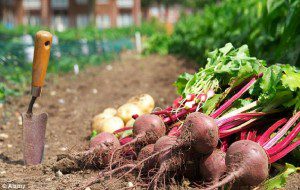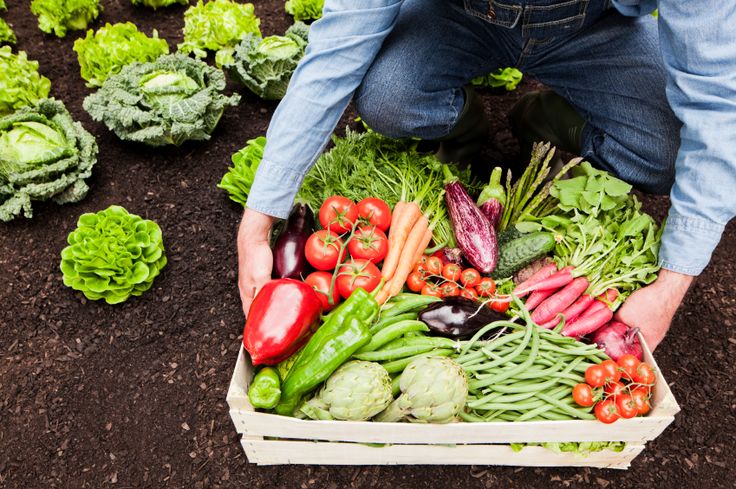23rd May 2015
Guest Writer for Wake Up World
One in three U.S. households are now growing food, according to a special report from the National Gardening Association (NGA).[1] This equates to about 42 million households with a food garden in 2013, a 17 percent increase from 2008.
Keeping a garden can improve your health by providing you with fresher, uncontaminated food, and cutting your grocery bill. NGA estimates that while the average US family spends $70 per year to plant a vegetable garden, they grow about $600 worth of produce – that’s a $530 return on your investment.[2]
The promise of garden-fresh tomatoes, cucumbers, sweet peppers, and carrots is what initially draws many new gardeners in… but what keeps so many involved is the intrinsically rewarding feeling of growing your own food.
11 Foods That Are Easy To Grow At Home
You might be surprised at how much food you can grow from just a few packets of seeds. Even if you’re new to gardening, many of the foods that follow are relatively foolproof options that will deliver a robust harvest, sometimes in as little as a few weeks from planting.[3]
Keep in mind that even if you don’t have space in your backyard for a garden, you can grow vegetables in containers on your patio, balcony, or rooftop. Community gardens are also growing in popularity where you can rent a plot of soil to grow food for your family.
If this is your first garden, you might want to start out with just a few options from this list. You’ll probably need to experiment with different methods of planting, watering, building soil health, and controlling pests naturally, but as you gain confidence, and harvest the fruits of your labor, your garden (and your passion for gardening) will likely continue to grow.
If you’re not sure of which seeds to choose, check out my Heirloom Seed Kits for wonderful selections of vegetables, fruits, herbs, and flowers that are non-hybrid, non-GMO, non-treated, and non-patented, in selections for both Northern and Southern climates.
1. Spinach and Loose-Leaf Lettuce
Early spring is a good time to plant spinach and other loose-leaf greens. The harvest is ready in just three to five weeks; simply cut off leaves here and there with scissors (don’t worry, they’ll grow back). Up to half of the nutrients in lettuce may be lost within two days of harvest, so growing your owns leads to a much more nutritious salad.
2. Kale
One cup of kale contains just around 30 calories but will provide you with seven times the daily recommended amount of vitamin K1, twice the amount of vitamin A and a day’s worth of vitamin C, plus antioxidants, minerals, and much more.
This leafy green also has anti-inflammatory properties that may help prevent arthritis, heart disease, and autoimmune diseases – plant-based omega-3 fats for building cell membranes, cancer-fighting sulforaphane, and indole-3-carbinol, and an impressive number of beneficial flavonoids.
Kale grows all season long, but its flavor gets sweeter after a frost. Impressively, kale can survive temperatures as low as 10° Fahrenheit, so be sure to keep it growing into the fall and winter. Kale is ready to harvest about a month after planting.
3. Sprouts
Growing your own sprouts is quite easy, and you don’t need a whole lot of space either; they can even be grown indoors. Sprouts may be small, but they are packed with nutrition, including vitamins, minerals, antioxidants, and enzymes that help protect against free radical damage.
Two of my personal favorites are sunflower seed and pea shoots — both of which are typically about 30 times more nutritious than organic vegetables. They’re also among the highest in protein. In addition, sunflower seeds contain healthy fats, essential fatty acids, and fiber — all of which are important for optimal health.
I used Ball jars when I first started sprouting seeds about 25 years ago, but I’ve since switched over to growing them in potting soil. With Ball jars you need to rinse them several times a day to prevent mold growth and it is a hassle to have them draining in the sink, taking up space.
Moreover, you need dozens of jars to produce the same amount of sprouts as just one flat tray. I didn’t have the time or patience for that, and you may not either. The choice is yours though. You can easily grow sprouts and shoots with or without soil.
My Sprout Doctor Starter Kit comes with what I consider to be three of the best sprouts to grow – sunflower shoots, broccoli sprouts, and pea shoots. When grown in soil, you can harvest your sprouts in about a week, and a pound of seeds will probably produce over 10 pounds of sprouts.
Sunflower shoots will give you the most volume for your effort and, in my opinion, have the best taste. In one 10×10 tray, you can harvest between one and two pounds of sunflower sprouts, which will last you about three days. You can store them in the fridge for about a week. Broccoli sprouts look and taste similar to alfalfa sprouts, which most people like.
They’re perfect for adding to salads, either in addition to or in lieu of salad greens, and sandwiches and are especially tasty in combination with fresh avocado. You can also add them to your vegetable juice or smoothies.
I’ve partnered with a company in a small town in Vermont that develops, breeds, and grows their own seeds, and is an industry leader in seed safety for sprouts and shoots.
All of my seeds are non-GMO, certified organic, and packed with nutrition. My starter kit makes it easy to grow your own sprouts in the comfort of your home, whenever you want. It provides everything you need, so all you have to do is grow and enjoy your sprouts.
4. Rainbow Chard
Chard belongs to the chenopod food family, along with beets and spinach. It’s an excellent source of vitamins C, E, and A (in the form of beta-carotene) along with the minerals manganese and zinc. It’s a hearty plant that grows easily, and it makes a striking addition to your garden with its bright red stems.
Plus, chard degrades quickly during shipping, making it ideal to grow at home. Plant chard in early spring, and you’ll be able to harvest it all season long.
5. Bok Choy
Bok choy, which is also referred to as Chinese white cabbage, contains vitamins C and K, plus a higher concentration of beta-carotene and vitamin A than any other variety of cabbage. It also contains important nutrients such as calcium, magnesium, potassium, and manganese, all wrapped up in an extremely low-calorie package
Bok choy can be planted early spring through midsummer. Its leaves can be harvested when they’re about three inches tall, or you can wait until a head forms and harvest the whole plant at once.
6. Herbs
Fresh herbs can make your meals pop, but they’re expensive to purchase in the store. Fortunately, it takes very little space or skill to grow your own. You can even grow them on a windowsill. Some basic herbs to start with include basil, chives, cilantro, parsley, thyme, and dill.
7. Cherry Tomatoes
While regular tomatoes are relatively easy to grow, they can be sensitive to different temperatures. Cherry tomatoes are even easier, and you’ll be rewarded with pint after pint of the fruits that taste far superior to store-bought versions (plus they’ll be free of pesticides and fertilizers).
Cherry tomatoes like a sunny spot to grow, and you’ll need to tie them to a supportive stick or tomato cage as they grow.
8. Cucumbers
Cucumbers grow quickly and easily, and once you taste your homegrown version, you won’t want to go back to store-bought. These vines like to climb, so plant them near a trellis or fence, and put the seeds in only after the soil is warm.
9. Peas
Snap peas are another “vertical” grower, making them ideal when space is tight. Plant peas in early spring and plan to tie them to a small trellis for support when they start to get tall.
10. Carrots
Don’t let carrots intimidate you just because they grow below ground – they’re quite hearty and easy to grow for beginners. The seeds may take a few weeks to sprout and the carrots are usually ready to harvest in 46 to 65 days. As Matthew Benson, author of Growing Beautiful Food and farmer of Stonegate Farm in New York, told TIME:[4]
“‘We know less about what’s going on under our feet than we do what goes on up in the cosmos,’ says Benson. ‘It’s so mysterious, all of these interesting relationships between roots and rhizomes and microbes and all these cellular chatter that goes on in the dirt.’ Pulling veggies from the soil can be very satisfying for a first time farmer.”
11. Edible Flowers
Edible flowers like nasturtium add color to your garden and can add intense flavor to your meals. Plus, nasturtium is known to naturally repel pests like whiteflies, squash bugs, and striped pumpkin beetles. It takes about one to two weeks from planting for flowers to develop (simply snip the petals off for eating). These can even be grown indoors in pots.
Source Article from http://wakeup-world.com/2015/05/23/11-vegetables-anyone-can-grow-at-home/
Related posts:
Views: 0
 RSS Feed
RSS Feed

















 May 22nd, 2015
May 22nd, 2015  FAKE NEWS for the Zionist agenda
FAKE NEWS for the Zionist agenda 


 Posted in
Posted in  Tags:
Tags: 
















